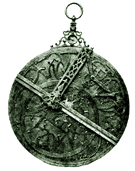 Figure 23. Before the invention of the sextant, the brass astrolabe was essential for navigation. It was probably introduced into Europe by the Arabs and could be used to ascertain the latitude, the points of the compass, the time and even the heights of mountains.
Figure 23. Before the invention of the sextant, the brass astrolabe was essential for navigation. It was probably introduced into Europe by the Arabs and could be used to ascertain the latitude, the points of the compass, the time and even the heights of mountains.An instrument of this type was used by Columbus, but astrolabes were known very much earlier. The instrument resulted from a combination of the Pre-Christian armilla and the theodolite; and was well known in the Near East, whence it was introduced into Europe by the Arabs, perhaps about A.D. 700. Astrolabes were generally made of brass. They ranged from a couple of inches in diameter up to a foot or more; and a very fine collection may be seen in the National Maritime Museum at Greenwich. With the aid of an astrolabe, one could ascertain the latitude, the points of the compass, the time, the heights of mountains, and even, if one believed in astrology, one's horoscope.
